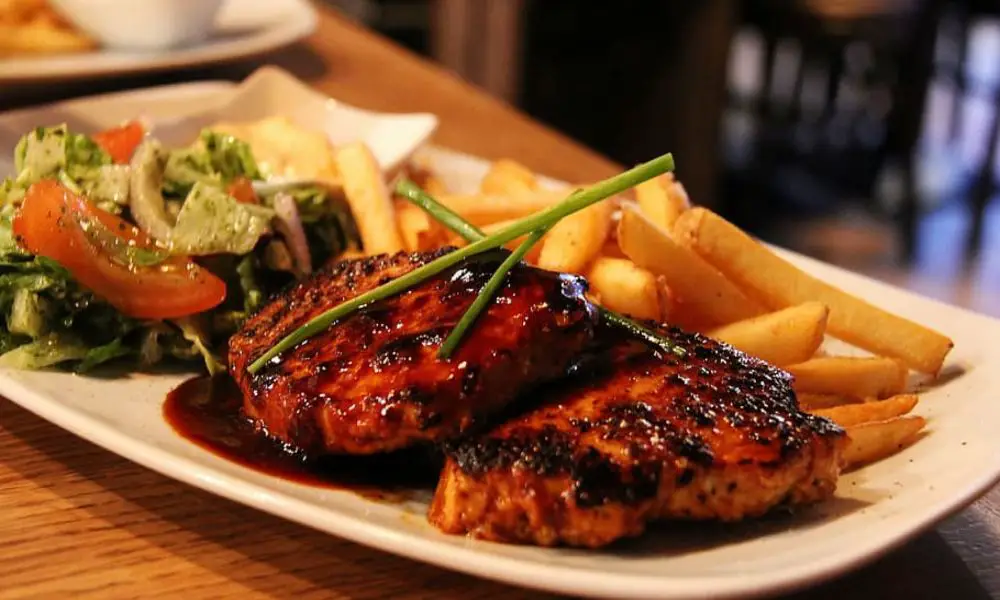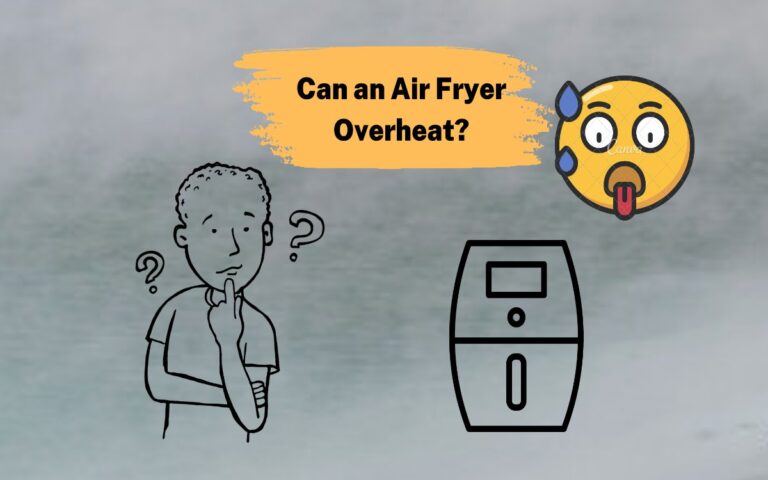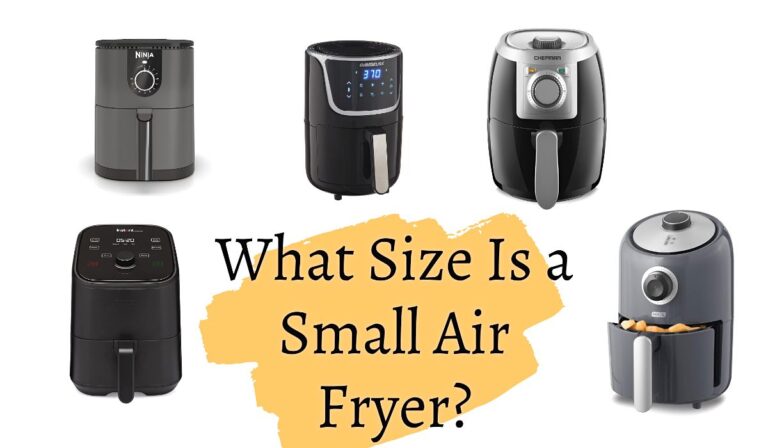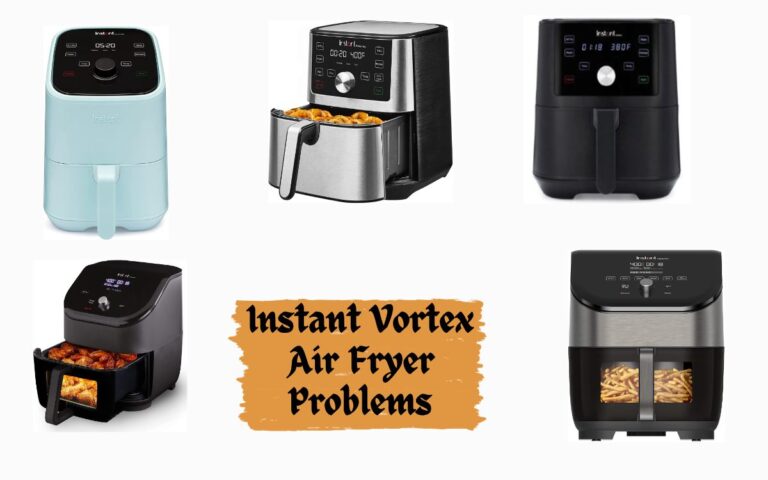Why Does My Air Fryer Burn Everything?
Do you sometimes deal with burnt food coming out of your air fryer? This happens often or when cooking specific types of food.
Don’t worry; you’re not the only one who has experienced this frustration.
The main reason your air fryer burns everything is its intense heat and rapid cooking process.
Factors like the type of food, its moisture content, and the air fryer’s temperature settings play crucial roles in determining the cooking outcome.
Understanding these factors and making slight adjustments will help you master the art of air frying and say goodbye to burnt meals forever.
In this article, we will dive into why you are experiencing this problem and provide you with practical solutions to ensure your meals come out perfectly crispy and delicious every time.
11 Common Causes Why an Air Fryer Burns Food
When your air fryer consistently burns food, several factors might be contributing to the problem.
Understanding these causes can help you troubleshoot and prevent future burning incidents.
Some common causes include:
1. Temperature Variations
Air fryers rely on built-in thermostats to regulate cooking temperature.
However, some models may suffer from inaccuracies, leading to uneven distribution of heat.
As a result, certain areas of the cooking chamber may become excessively hot while others remain cooler.
This temperature discrepancy can cause parts of the food to burn while leaving other portions undercooked.
In some cases, air fryers may have inaccurate temperature controls, leading to inconsistent cooking results.
If your air fryer’s temperature is not calibrated correctly, it can result in burning or undercooking.
2. Cooking Time Discrepancy
Recipes often come with suggested cooking times for air frying specific dishes.
However, each air fryer model may have variations in heating elements and airflow, leading to differences in cooking times.
If the suggested time is too long for a particular air fryer, the food can end up burnt.
Conversely, if the cooking time is too short, the food may remain uncooked.
A recipe suggests air frying chicken wings for 20 minutes, but in your air fryer, they get burnt within 15 minutes due to higher heat output.
Experiment with different cooking times and air fryer cheat sheets to find what works for you.
3. Food Placement
Overloading the air fryer basket with food can obstruct proper air circulation, preventing hot air from reaching all surfaces of the items being cooked.
This can result in uneven cooking and some parts of the food getting charred while others remain raw.
For example, when trying to cook a large batch of fries in the air fryer, stacking them may prevent the hot air from crisping them evenly.
This may lead to burnt fries at the bottom of the pile if you don’t shake the contents midway through cooking.
4. High-Fat Content
Foods with high-fat content, such as fatty cuts of meat or heavily marinated dishes, can release excess oil during cooking.
If the excess oil accumulates in the air fryer basket without proper drainage, it can generate smoke and potentially cause the food to burn.
5. Lack of Moisture
Some foods require moisture to cook properly in an air fryer.
Without adequate moisture, the food can become dry and prone to burning.
For example, air frying a boneless, skinless chicken breast without any marinade or oil can result in a dry and burnt exterior.
Check out these amazing air fryer chicken breast recipes to try out.
6. Coating Issues
Certain recipes recommend coating the food with breadcrumbs, flour, or batter before air frying.
If the coating contains sugars or other easily burnable ingredients, it can lead to burnt spots on the food’s surface.
Air frying breaded shrimp with a sweet coconut coating might cause the sugar to caramelize and burn during cooking.
7. Inadequate Preheating
Preheating the air fryer is essential to ensure that the cooking chamber reaches the desired temperature before adding the food.
Neglecting to preheat can lead to uneven cooking and increase the risk of burning.
Although some brands may not require preheating, most manufacturers recommend it.
For example, the Ninja AF161 Max XL air fryer recommends preheating for at least 3 minutes.
8. Incorrect Oil Usage
Choosing the wrong type of oil or using too much oil can contribute to burning issues.
Some oils have low smoke points, which means they can burn at high temperatures.
It’s important to select the best oils with higher smoke points for air frying.
9. Temperature Setting
One of the primary reasons for burnt food in an air fryer is incorrect temperature settings.
Air fryers come with adjustable temperature controls, allowing you to set the desired temperature for cooking.
If the temperature is set too high, it can result in burnt or overcooked food.
It’s important to refer to the recommended temperature guidelines provided in your air fryer’s user manual or recipe book.
10. Air Fryer Maintenance
Neglecting proper maintenance of your air fryer can also contribute to burning issues.
Accumulated grease, oil, or food debris can hinder the proper circulation of hot air, leading to uneven cooking or burning.
Regularly cleaning your air fryer and its components will help ensure optimal performance and prevent unwanted burnt food.
11. Food Size and Thickness
The size and thickness of the food you’re cooking can also impact the cooking time and potential for burning.
Larger or thicker pieces of food may require adjustments in cooking time or temperature to ensure thorough cooking without burning the exterior.
It’s essential to consider the size and thickness of the food when setting the cooking parameters.
Solutions to Avoid Food Burning in Air Fryer

a. Preheat the Air Fryer
Always preheat the air fryer according to the manufacturer’s instructions.
Preheating ensures that the cooking chamber is uniformly heated before the food is added, promoting even cooking and preventing burning.
b. Monitor Cooking Time
Keep a close eye on the food as it cooks.
If using a recipe, use the suggested cooking time as a general guideline but check the food a few minutes before the timer ends.
This will allow you to adjust for any differences in your air fryer’s performance.
Use air fryer accessories such as a thermometer and cooking tongs to monitor.
c. Arrange Food Properly
Avoid overcrowding the air fryer basket and arrange the food in a single layer.
Providing enough space between items allows the hot air to circulate freely and ensures even cooking.
If you need to cook large batches of food, you can stack the food using a rack to give space for air to flow.
d. Adjust Temperature and Timing
If you notice that the food is burning or undercooking, consider adjusting the temperature and cooking time settings on your air fryer to achieve better results.
e. Use a Cooking Oil
For foods that tend to dry out quickly, apply a light coating of cooking oil using an oil mister or brush to add moisture and prevent burning.
f. Choose the Right Coating
When using coatings or breading, opt for options that are less likely to burn.
Dry breadcrumbs or panko can provide a crispy texture without the risk of excessive browning.
g. Reduce Fat Content
Trim excess fat from meat or use leaner cuts to minimize the release of oil during cooking, reducing the chances of generating smoke and burning.
h. Add Moisture
For certain foods like chicken or fish, marinate or brine them before air frying to add moisture and enhance the overall flavor while preventing dryness and burning.
i. Shake the Basket
If you’re cooking foods that require flipping or stirring, pause the cooking process, and gently shake the air fryer basket to ensure even cooking on all sides.
j. Experiment and Adjust
Finding the perfect balance for your air fryer may require some trial and error.
Each air fryer model can have slight variations in cooking performance.
It’s essential to experiment with different temperature settings, cooking times, and food placement.
Keep track of your adjustments and make note of the ones that yield the best results to enhance your future cooking experiences.
Conclusion
While air fryers are undoubtedly convenient and efficient kitchen appliances, there are instances where they might burn your food.
Understanding the reasons behind this issue can help you make the most of your air fryer and achieve better cooking results.
Now that we’ve explored the reasons behind burnt food in an air fryer, let’s hear from you!
Have you ever experienced your air fryer burning your food?
If yes, what do you think might have caused it?
Share your experiences and tips in the comments below, and let’s help each other become air frying pros!
- Air Fryer Chicken Parmesan Recipes - September 17, 2024
- Air Fryer Sweet Potato Fries Recipes - August 8, 2024
- Air Fryer Seasoning Mistakes You’re Making - July 22, 2024







